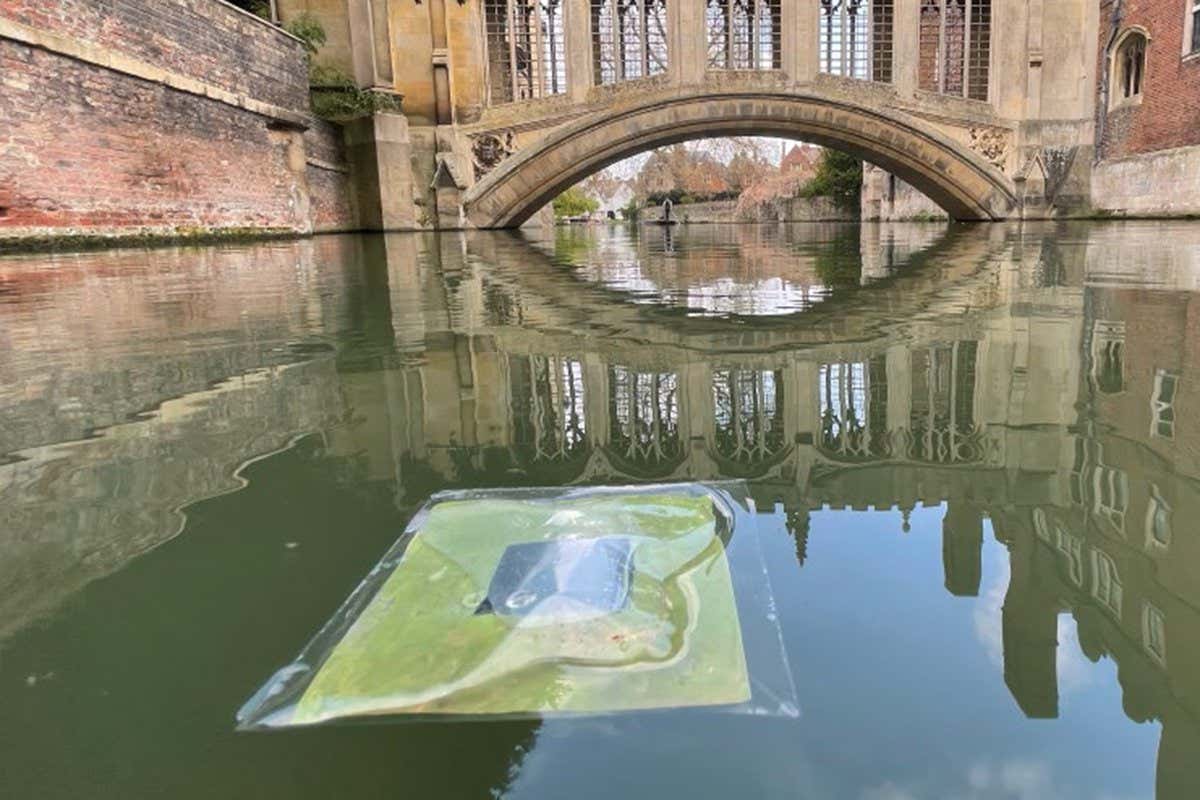A solar fuel cell that produces carbon monoxide and hydrogen is light enough to float on water, which could help address the shortage of land available for solar projects
Technology
17 August 2022
The artificial leaf floating on the river Cam in Cambridge V Andrei et al.
An artificial leaf that uses sunlight to produce ingredients for fuel is light enough to float on water, offering a possible way to address the shortage of land available for capturing solar energy.
Solar fuel cells use energy from sunlight to power chemical reactions that produce fuels, in contrast to photovoltaic cells, which use sunlight to generate electricity. Researchers have long sought to imitate photosynthesis in plants with a synthetic process that produces fuel from carbon dioxide, water and sunlight. But existing technology has been either inefficient or so heavy that it is confined to land, where space is in short supply.
Erwin Reisner at the University of Cambridge and his colleagues developed a solar fuel cell made from lead perovskite, a kind of crystal that can capture energy from light. The cell produces bubbles of hydrogen and carbon monoxide, which can be mixed together to make a fuel called syngas.
“It’s a first of its kind for solar fuel,” says Reisner. “There’s of course a lot of significant developments for photovoltaics where people look at floating photovoltaic farms, and we just thought that something very similar could be done for solar fuels.”
The prototype device is a square about 10 centimetres wide and a millimetre thick. In tests on the river Cam in Cambridge, it produced hydrogen with an efficiency of 0.58 per cent and carbon monoxide with an efficiency of 0.0053 per cent. When compared on a gram for gram basis, it is similar to current solar fuel technologies and even some plants, says Reisner.
The fabrication process, which involves depositing a thin film of perovskite on indium and tin-coated polyester, is easily scalable, says Reisner, but there are still some problems. The efficiency needs to be closer to 10 per cent for commercial applications, and the materials used in the prototype could be potentially toxic to waterways, even though they are contained in the device.
Reisner and his team have yet to design a method to collect the gas bubbles from the device, but they hope that the leaf will serve as a proof of concept for commercial devices.
Journal reference: Nature, DOI: 10.1038/s41586-022-04978-6
More on these topics:
